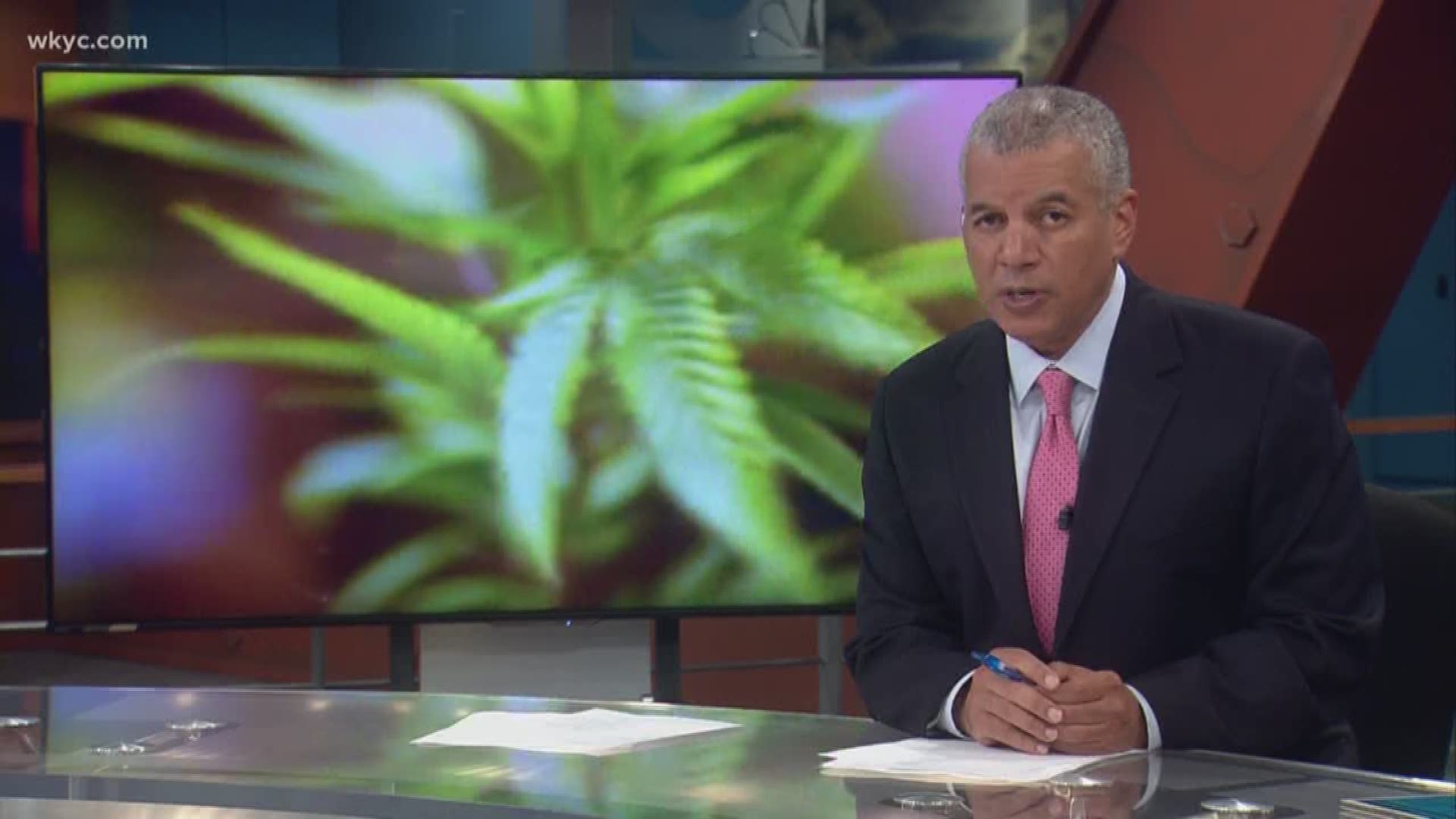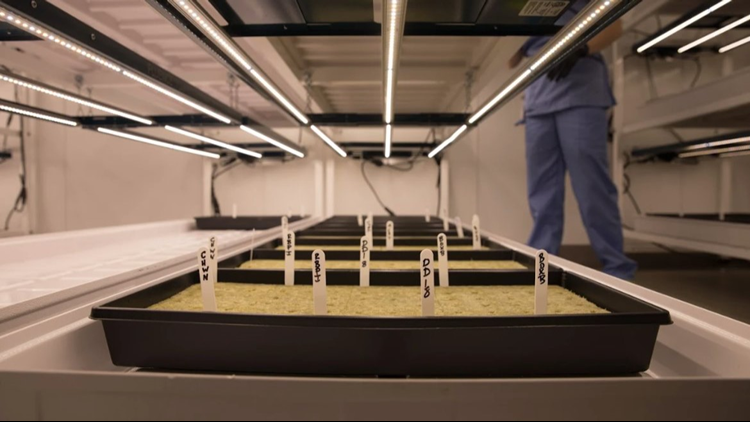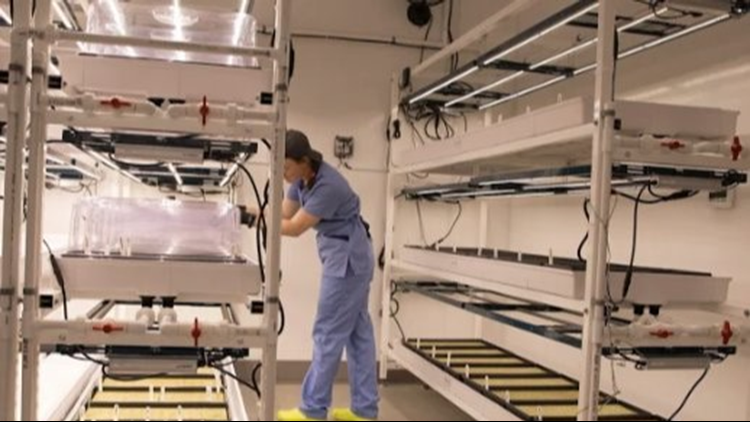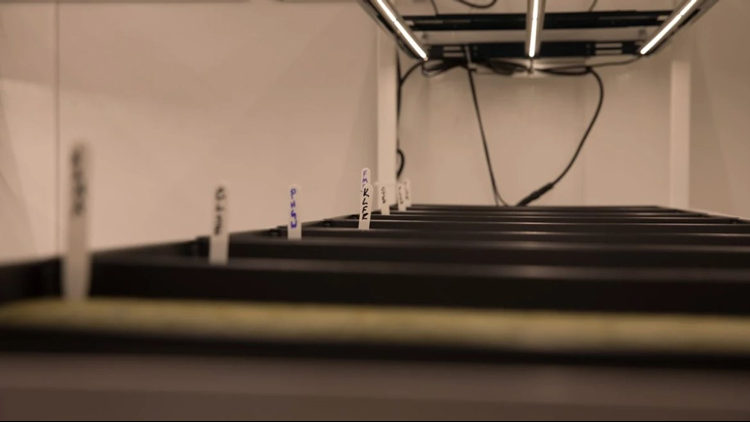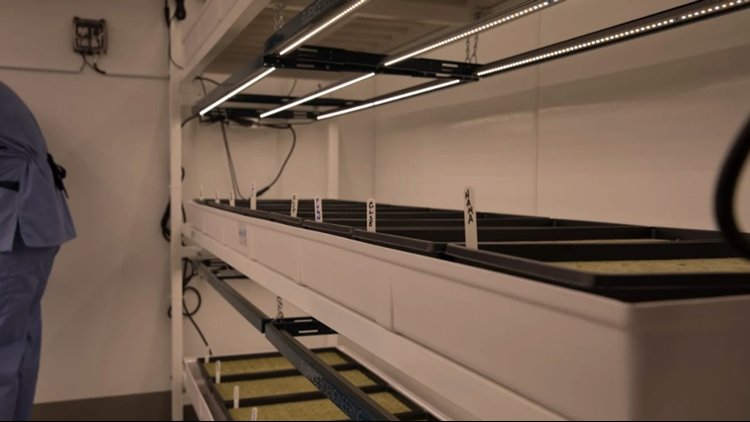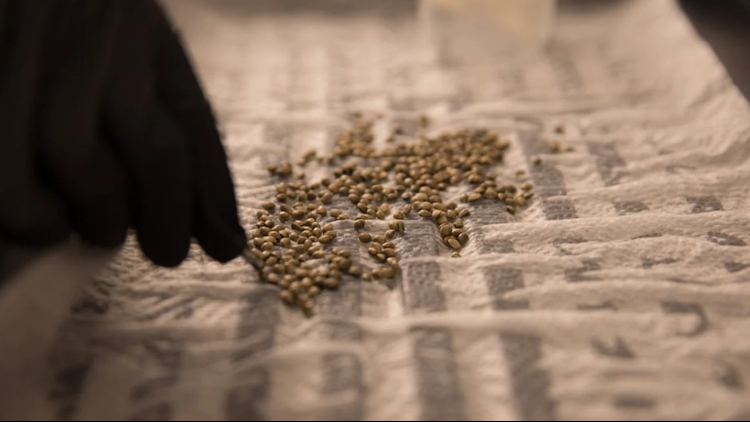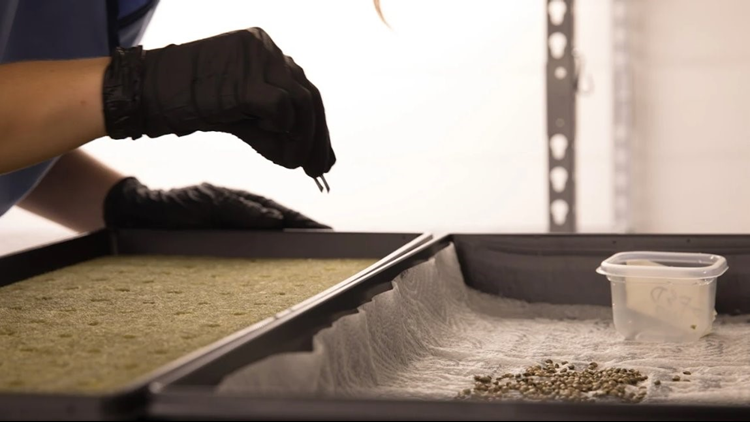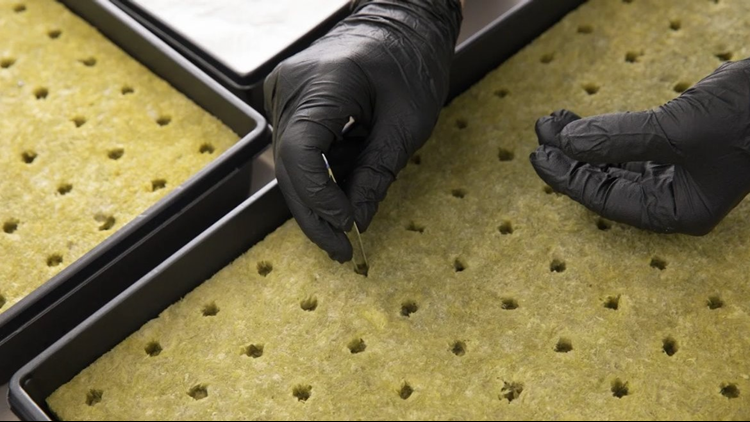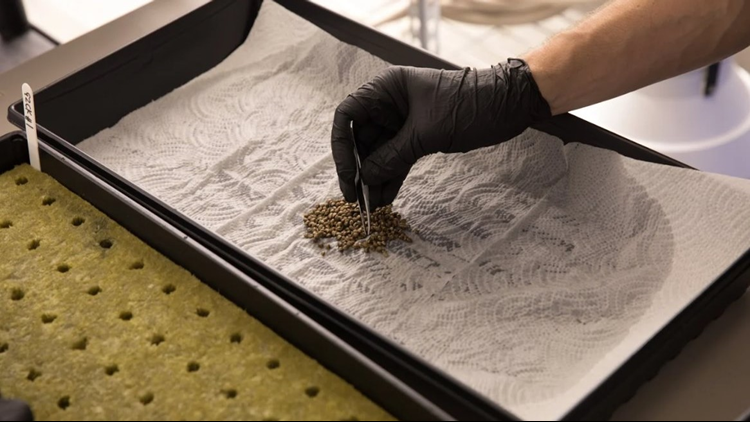CLEVELAND (AP) — Stepping into the small vestibule, visitors are immediately struck by a slightly musty, slightly skunky odor that provides a redolent clue about what's happening there.
The next clue: An employee takes your identification from behind bulletproof glass and doesn't give it back until you leave.
Welcome to Eastlake-based Buckeye Relief LLC, the first large marijuana cultivator granted permission by the state to begin growing pot for Ohio's fledgling medical marijuana industry. The company expects to harvest Ohio's first legal marijuana at newly built, multi-million dollar state-of-the-art facility sometime in December.
Visitors allowed access to Buckeye Relief's equally secure growing rooms must wear plastic Tyvek suits to prevent plants from being contaminated. Employees don medical scrubs before entering.
"I'm at the front end of a fascinating and exciting business," majority owner Andy Rayburn said last week. "The bottom line is, it is actual, helpful medicine. The stories are in abundance."
The Ohio Legislature approved the creation of a medical marijuana program in June 2016. The law allows residents with at least one of 21 qualifying medical conditions to obtain a doctor's recommendation to buy marijuana at state-licensed dispensaries. While Ohio missed its Sept. 8 deadline for having medical marijuana available, officials think the program should be operational by the end of the year.
Ohio is among 30 states that now have some form of legalized marijuana.
PHOTOS | Buckeye Relief begins planting marijuana seeds at Eastlake facility
Buckeye Relief planted its first seeds July 31. After three weeks, 3-inch seedlings were transferred to a vegetation room, where they remained for another three weeks before being placed in one of the facility's three "adult" rooms after reaching about a foot high. Plants are grown in containers filled with an organic hydroponic growing medium called rock wool. Individual injectors connected to the building's water room feed each plant with prescribed amounts of water and nutrients.
It's in the adult rooms where female plants will eventually flower under the warm glow of adjustable LED light bars. Male plants, meanwhile, are removed and destroyed as soon as they're identified to prevent them from pollinating the females and causing them to produce unwanted seeds. Female plants as they mature are essentially tricked into believing it's the end of the growing season and produce flowers containing the plant's highest concentrations of marijuana's psychoactive ingredient, tetrahydrocannabinol or THC.
State law allows for marijuana flowers to be sold with a THC content of 35 percent. Rayburn said he's never heard of marijuana of that potency produced anywhere. Buckeye Relief expects its buds to have THC contents of between 10 and 30 percent, depending on the strain.
The flowers are dried and cured before being sold to dispensaries. Trimmed material from the flowers, along with some leaves, are pressed and distilled to produce an oil used to make edibles and other products such as CBD extracts. Buckeye Relief has applied for a processing license to create those products in-house but has yet to receive state approval.
Buckeye Relief is in the experimental stage of its operations. Seeds from around 140 strains have been planted with a goal of reducing the number to what employees say will be 20 to 30 "very good" strains. The expectation is that Buckeye Relief will provide dispensaries with many of the popular strains sold in the cannabis meccas of California and Colorado.
The company's chief technology officer is Ed Neimeier, a top-rated systems analysis expert who said his job is to help Buckeye Relief grow cannabis of the highest quality through testing and experimentation. Neimeier, like all but one of the company's first 17 employees, had never previously worked in the cannabis industry but was hired by Rayburn for his expertise other fields. Neimeier has previously worked in the automotive and steel industries.
"I'd never seen a live pot plant until last summer," he said.
Buckeye Relief plans to sell its first harvested buds to the small number of dispensaries that are expected to have opened by December. The company's plans also will depend on Ohio having its patient registration website up and running by then.
Rayburn had enjoyed considerable success running businesses and investing his own money in various ventures like minor league baseball teams when he got a call in early 2015 from a close friend dying of cancer. The friend told him he had just smoked marijuana for the first time in his life and after months of enduring the debilitating effects of opioids while in hospice care, was able to once again eat, sleep and not feel miserable.
Today, Rayburn, 63, sits on the cutting edge of Ohio's fledgling medical marijuana industry after spending millions of dollars of his and his investors' money in the belief that growing cannabis will not only yield profits, but will also provide much-needed help to people who find doctors willing to recommend the drug for them.
"It was moving," Rayburn said of his friend's experience with marijuana. "I've heard this story so many times since then. Even old ladies trying it for the first time."

